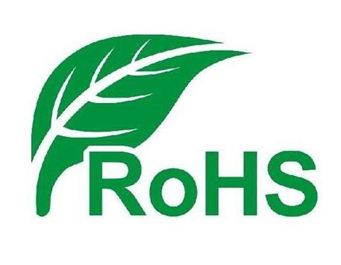Special Topic on RoHS Certification

Details
RoHS is a mandatory standard established by the legislation of the European Union. Its full name is the "Restriction of Hazardous Substances Directive". This standard has been officially implemented since July 1, 2006, and is mainly used to regulate the material and process standards of electronic and electrical products, making them more conducive to human health and environmental protection. The purpose of this standard is to eliminate six substances, namely lead, mercury, cadmium, hexavalent chromium, polybrominated biphenyls and polybrominated diphenyl ethers (Note: The correct Chinese name for PBDE is polybrominated diphenyl ethers, and polybrominated biphenyl ethers is an incorrect term), in electrical and electronic products, and it particularly stipulates that the content of lead should not exceed 0.1%.
The European Parliament and the European Commission published the Waste Electrical and Electronic Equipment Directive (WEEE Directive for short) and the Restriction of the Use of Certain Hazardous Substances in Electrical and Electronic Equipment Directive (RoHS Directive for short) in their Official Journal on February 13, 2003.
The RoHS Directive and the WEEE Directive stipulate that 102 types of products in ten major categories are subject to hazardous substance restriction management and waste recycling management. The first seven types of products are all major electrical products exported from China. This includes large household appliances, small household appliances, information and communication equipment, consumer products, lighting equipment, electrical and electronic tools, toys, leisure and sports equipment, medical equipment (excluding implanted or infected products), monitoring and control instruments, and vending machines.
On December 3, 2008, the European Union issued proposals to revise the WEEE Directive (2002/96/EC) and the RoHS Directive (2002/95/EC). The purpose of this proposal is to create a better regulatory environment, that is, regulations that are simple, understandable, effective and enforceable. The main contents of the revision of the RoHS Directive are:
1. The legal terms have been changed to clarify the scope and definition of the instructions;
2. Introduce the CE marking and EC declaration of conformity for the product;
3. Gradually incorporate medical devices, control and monitoring instruments into the scope of the RoHS Directive;
The six restricted hazardous substances remain unchanged, but four substances - diisobutyl phthalate (DIBP), 2-ethylhexyl phthalate (DEHP), butyl benzyl phthalate (BBP), and dibutyl phthalate (DBP) - are required for priority assessment to determine whether they will be included in the restricted substances category in the future
RoHS scope
Only for new products launched on the market from July 1, 2006.
Including household incandescent lamps and light sources.
It should not violate the specific directives or regulations regarding safety and health requirements - Vehicle ELV, Vehicle Directive; Battery Directives, 91/157/EEC,93/86/EEC&98/101/EC
Excluding: Medical devices or monitoring equipment (WEEE Directive Categories 8 and 9); Maintenance spare parts placed on the market before July 1, 2006; Recycled products that were originally put on the market before July 1, 2006.
Restricted toxic substances
· Heavy metals:
The new European RoHS certificate (ROHS 2.0)
The new European RoHS certificate (ROHS 2.0)
-lead;
-Mercury
-Cadmium;
-Chromium (VI) hexavalent Chromium.
· Some brominated flame retardants:
Polybrominated biphenyls (PBB's);
Polybrominated diphenyl ethers (PBDE's)
The maximum limit index is:
· Cadmium: 0.01% (100ppm);
Lead, mercury, hexavalent chromium, polybrominated biphenyls, polybrominated diphenyl ethers: 0.1% (1000ppm).
Six types of harmful substances
RoHS applies to all electrical and electronic products that may contain the above six hazardous substances in the production process and raw materials, mainly including: white goods, such as refrigerators, washing machines, microwave ovens, air conditioners, vacuum cleaners, water heaters, etc., and black goods, such as audio and video products, DVD, CD, TV receivers, IT products, digital products, communication products, etc. Electric tools, electric and electronic toys, medical electrical equipment.
Examples of lead (Pb) using this substance: solder, glass, PVC stabilizer
2. Mercury (Hg) Examples of the use of this substance: thermostats, sensors, switches and relays, light bulbs
3. Cadmium (Cd) Examples of the use of this substance: switches, springs, connectors, housings and PCBS, contacts, batteries
4. Hexavalent chromium (Cr 6+) Examples of using this substance: metal anti-corrosion coatings
5. Examples of polybrominated biphenyls (PBBS) using this substance: flame retardants, PCBS, connectors, plastic casings
6. Polybrominated diphenyl ethers (PBDE) Examples of the use of this substance: flame retardants, PCBS, connectors, plastic casings

 Scan WeChat to chat
Scan WeChat to chat